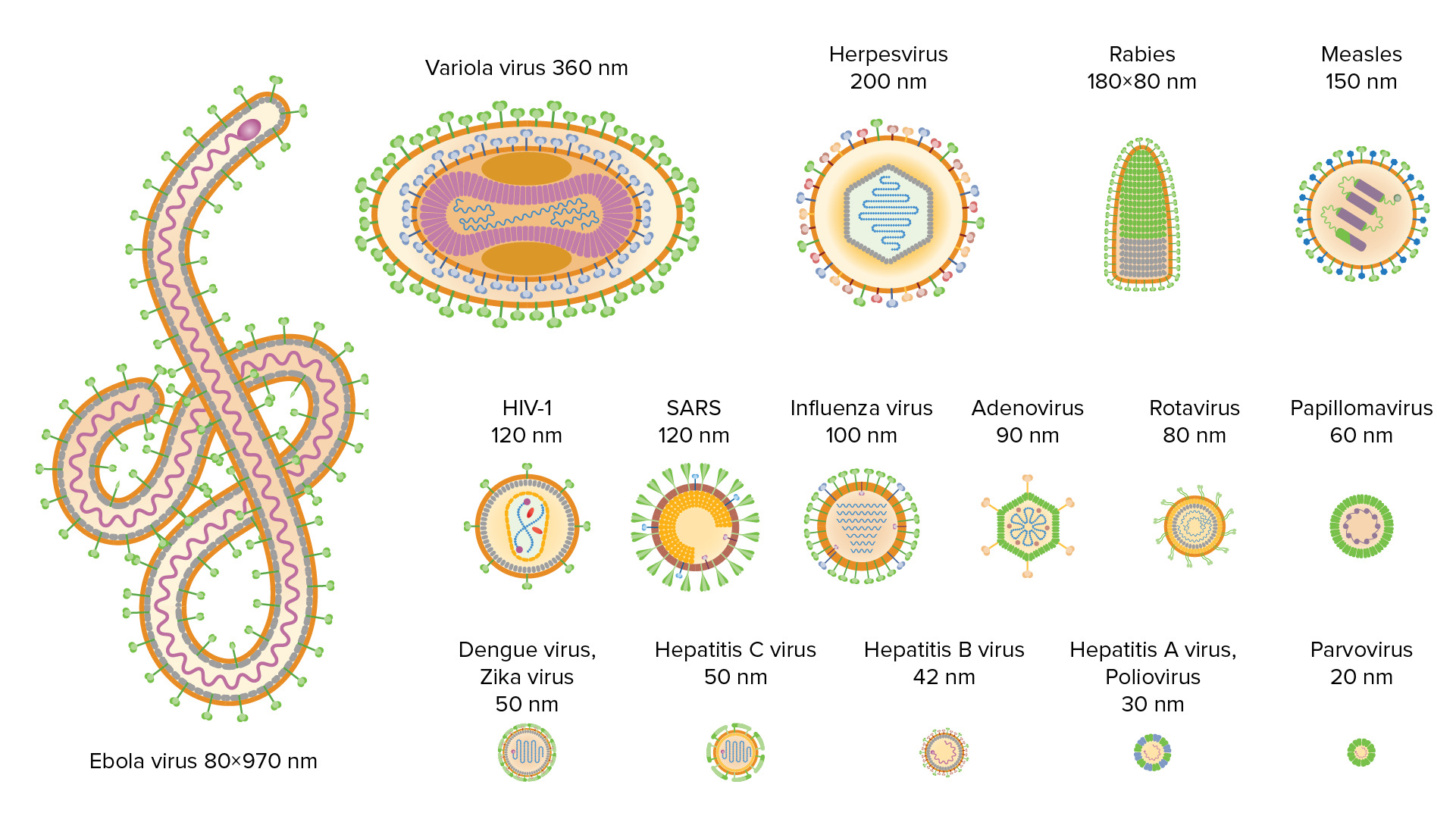Playlist
Show Playlist
Hide Playlist
Viral Infections
-
Slides Overview of Different Classes of Microorganisms.pdf
-
Download Lecture Overview
00:01 Viruses first. 00:02 So these are obligated intracellular organisms. 00:05 Yes, they can live outside, but they can't proliferate without being within a particular cell. 00:10 They have different tropisms depending on what cell surface receptor they bind to. 00:16 They can be DNA or RNA genomes, they are typically encompassed by a protein capsid that may also include membrane materials from the host that they are escaping from. 00:32 And they do their deed through a variety of mechanisms, but they are pathogenic when they take over the host machinery for their replication, and just showing here is Herpes simplex virus. 00:45 So the infections that can occur can be lytic, that is to say, as the cell is hosting the reproduction of all these virus, the virus can eventually consume all of the host ATP machinery, consume all of its replicative capacity and the cell dies, and so it lyses. 01:04 That actually a very convenient way for the virus to be transmitted to the next host, it just, it grows until the cell ruptures and then there's a whole bunch of virus that spews out and you could potentially get it on to hunt to its next cell to infect. 01:16 You can have persistent infection, so the virus can be kinder or gentler, and it won't cause the lyses of its host cell, but it consistently just cranks up virus all the time, and a good example of this is hepatitis B, where it is not a lytic infection it is a persistent infection and you're constantly just making more virus, and the virus doesn't take over so much that the cell can't continue to be itself. 01:44 And then there are latent infections. 01:46 So viruses can sit in a latent form as a circularized form or as a part of a form that is not being actively being transcribed, and then something happens to the cell, we activate it in various ways and then we can get transcription and we can give virus replication, so you could have latent infections. 02:04 So virus can be tricky, it can be sneaky. 02:08 So the various pathologic features, if we think about it, it's an intracellular pathogen so antibodies, neutrophils, macrophages in most cases won't do much to the virus, so we need to have a chronic inflammatory cell infiltrate and particularly cytotoxic T-lymphocytes and maybe natural killer cells that are going to kill the infected cell, that's how we're going to deal with it. 02:31 That's also how we will recognize it as being a virally infected cell. 02:37 We can also see some effects directly related to the virus, so we can have cell lyses, and we're seeing actually a blister in a patient that had herpes varicella, otherwise known as chicken pox, and had developed a blister as a result of the lyses of the cells within the epidermis. 02:57 Sometimes the cells confuse because the virus makes for a an easy way for two different cells to actually fuse their membranes and become a multinucleated cell, and that's what's going on here. 03:10 Again, in herpes varicella, the lower right hand panel, that's a Tzanck prep. 03:15 So if you have a blister like you see in the left hand bottom panel, and you unroof it, you put a microscope slide down top of it and touch it and then you pull it back up, you'll see multiple multinucleated cells due to fusion, because of the virus, and that's a positive Tzanck prep. 03:31 You can also get inclusion bodies, so depending on the accumulation of viral proteins or viral genomic bits, you can actually see collections of eosinophilic, pink. 03:44 Or even sometimes, bluish material within the cell, and that will tell us that that cell is probably infected.
About the Lecture
The lecture Viral Infections by Richard Mitchell, MD, PhD is from the course Host–pathogen Interaction.
Included Quiz Questions
An example of a persistent type of viral infection is...
- ...hepatitis B.
- ...candidiasis.
- ...shingles.
- ...tuberculosis.
- ...varicella.
Customer reviews
5,0 of 5 stars
| 5 Stars |
|
5 |
| 4 Stars |
|
0 |
| 3 Stars |
|
0 |
| 2 Stars |
|
0 |
| 1 Star |
|
0 |




